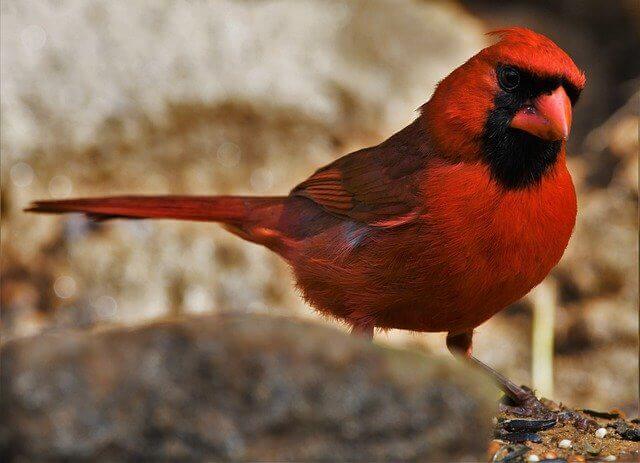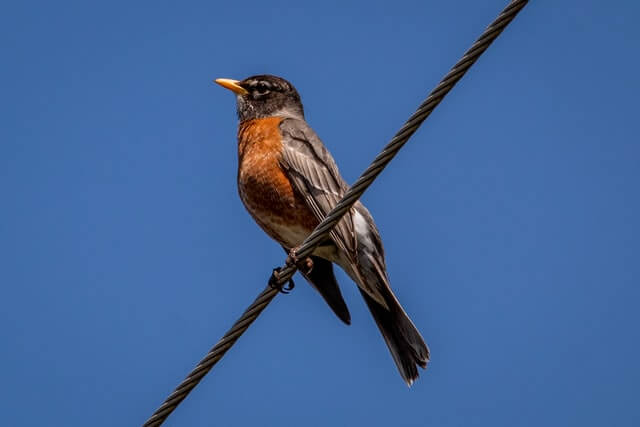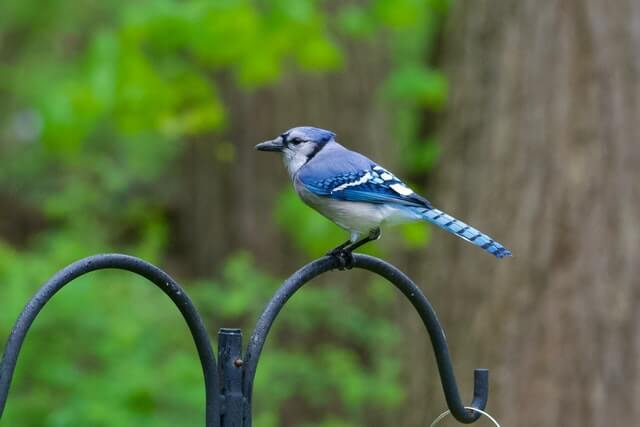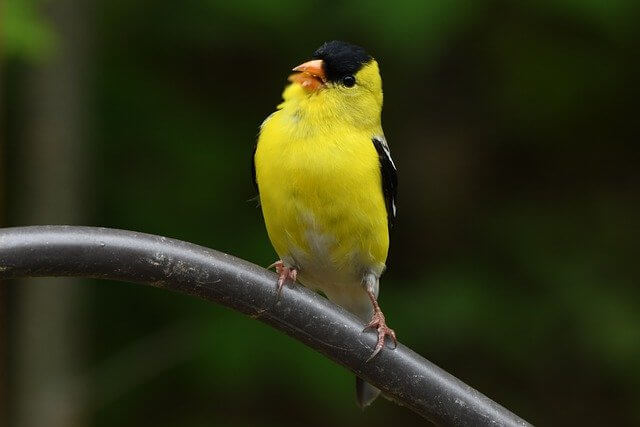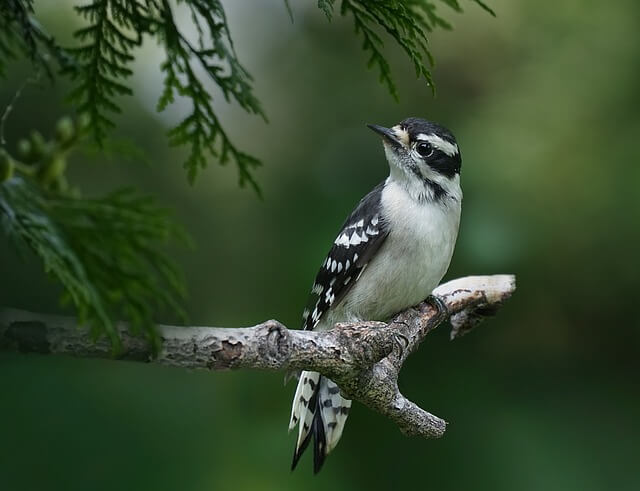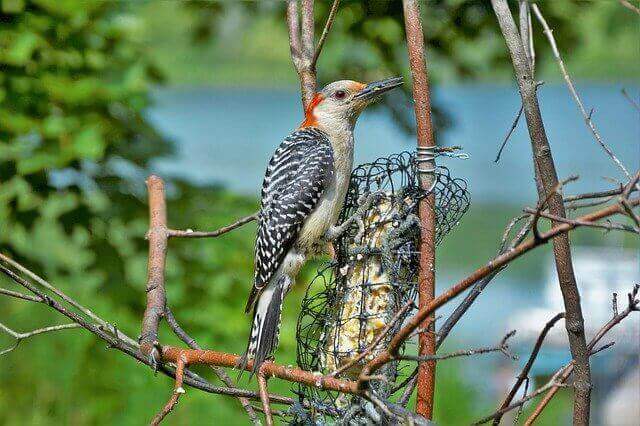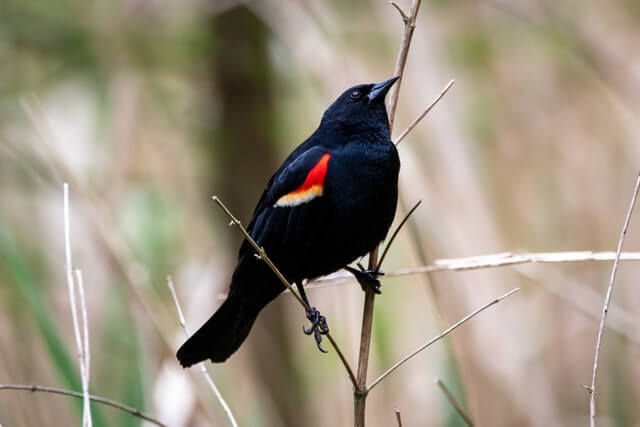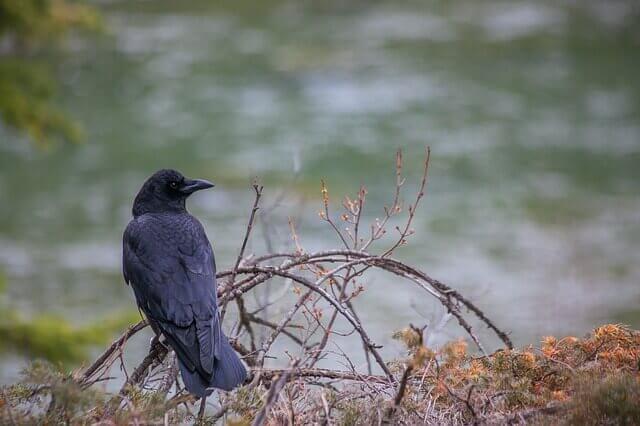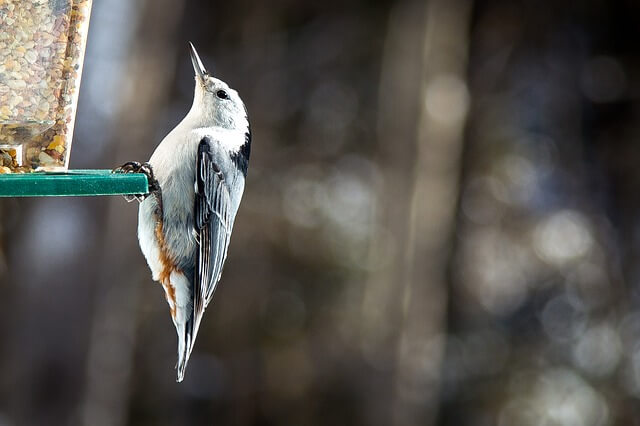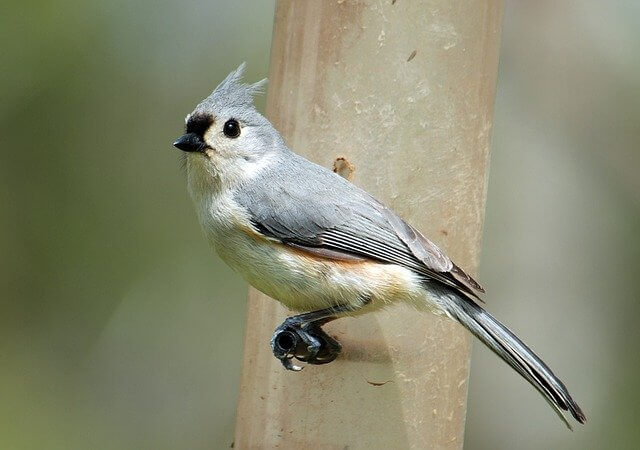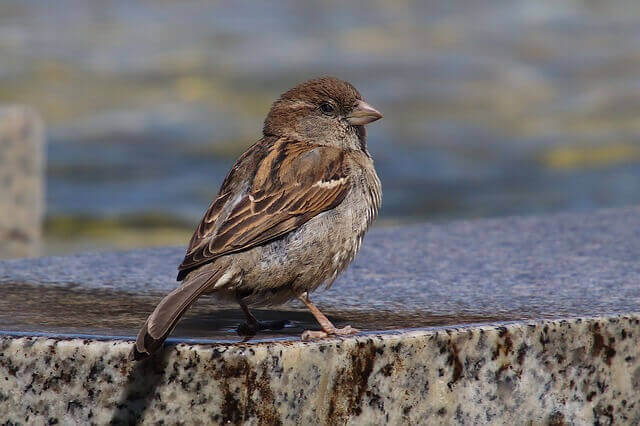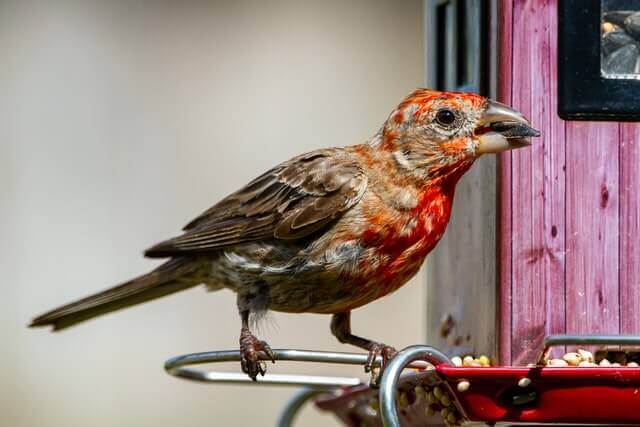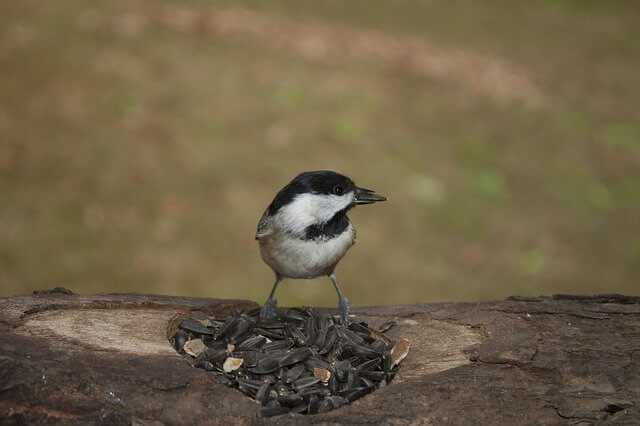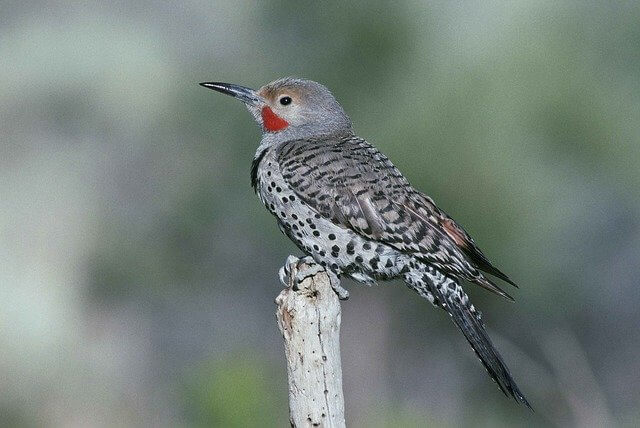Embark on a fascinating exploration of Ohio’s diverse birding landscape with our comprehensive guide. This Ultimate Guide showcases the 62 most common birds found throughout the Buckeye State, offering insightful details on their habitats, behaviors, and unique attributes.
Whether you’re an avid birdwatcher, a nature enthusiast, or simply curious about Ohio’s rich birdlife, this guide provides a captivating glimpse into the avian diversity that enriches this scenic state.
Table of Contents
- 1 Common Backyard Birds In Ohio
- 1.1 Northern Cardinal
- 1.2 American Robin
- 1.3 Blue Jay
- 1.4 Mourning Dove
- 1.5 Song Sparrow
- 1.6 American Goldfinch
- 1.7 Downy Woodpecker
- 1.8 Red-bellied Woodpecker
- 1.9 Red-winged Blackbird
- 1.10 European Starling
- 1.11 American Crow
- 1.12 White-breasted Nuthatch
- 1.13 Tufted Titmouse
- 1.14 House Sparrow
- 1.15 Common Grackle
- 1.16 House Finch
- 1.17 Carolina Wren
- 1.18 Carolina Chickadee
- 1.19 Northern Flicker
- 1.20 Gray Catbird
- 2 Frequently Asked Questions
- 3 Author
Common Backyard Birds In Ohio
Northern Cardinal
The Northern Cardinal is a beautiful bird with a brilliant red crest and black masks. It has a short beak that enables it to eat mostly seeds and fruits, but will also eat small insects as well. The Northern cardinal ranges from the eastern coast of Canada south to Panama. They can be found in North America throughout much of the central and eastern United States, along the Appalachian Mountains, Great Lakes region, Texas, Arizona, and New Mexico.
Cardinals prefer habitats with dense undergrowth of shrubs, along with tree cover. They have a diet consisting of mainly seeds and fruit. They often feed on the ground or in low shrubs near the forest floor, but will also take prey from trees such as grubs, caterpillars, and beetles. Male cardinals migrate northward beginning in March, and females soon after.
- Frequency: 56.37% (Statistic by: eBird)
- Color: Mostly red with a black mask on the face, short pink bill
- Habitat: woodlands, gardens, parks, backyards, and wetlands
- Range: USA, Canada, Mexico
- Size: 8.2 – 9.3″ inches
- Weight: 33 – 65 grams
- Diet: Fruits, berries, and insects (grasshoppers, beetles, snails, cicadas)
- Family: Cardinalidae
- Genus: Cardinalis
- Maps: Range Map – Sightings Map
- Sounds: Calls and Songs
Related Posts:
- Where are Cardinal Birds Found – Best Places to Look
- Cardinal Bird Facts You Never Knew
- 10 Best Bird Feeders For Cardinals
American Robin
The American Robin is a small songbird found throughout North America. They are one of the most widespread species in the United States and Canada, as well as Mexico. This means that they can be found in almost every state in the US and most provinces in Canada. Their habitats range from mountain forests to wetlands to urban areas, where they feed on bread crumbs at bird feeders.
The American Robin eats mostly insects but will also eat berries, seeds, fruit, worms, and other invertebrates. Robins migrate south in winter when their food sources are limited by cold weather conditions in North America; they return north each spring.
- Frequency: 50.17%
- Color: Mostly brown on the back with an orange colored breast
- Habitat: Wooded areas, backyards, parks, fields
- Range: USA, Canada, Mexico
- Size: 12 – 16″ inches
- Weight: 72 – 95 grams
- Diet: Fruits, berries and insects (earthworms, beetles, caterpillars
- Family: Turdidae
- Genus: Turdus
Related Post:
Blue Jay
The Blue Jay is a member of the Corvidae family. They are native to North America and their range includes most of Canada, Alaska, California, Maine, New York, and Florida. The blue jay’s habitat consists mainly of deciduous or mixed forests in northern regions, but will also include evergreen forests near the coastlines in more southern areas.
Blue Jays feed on insects like grasshoppers, beetles, and caterpillars; nuts such as acorns or hazelnuts; seeds from sunflowers or dandelions; berries like blueberries or mulberries; and even corn on the cob. The blue jay has three main migration patterns: Northern Birds migrate northward during the summer months; Central birds stay in one area year-round.
- Frequency: 47.25%
- Color: Blue crest on the head, wings, back, and tail, and has a white face and belly
- Habitat: Deciduous and mixed forests, mixed woodlands, backyards, parks
- Range: Southern Canada, Eastern and Central United States, Florida and Texas
- Size: 8 – 12″ inches
- Weight: 70 – 100 grams
- Diet: Nuts, seeds, caterpillars, grasshoppers, and beetles
- Family: Corvidae
- Genus: Cyanocitta
Related Posts:
- How to Attract Blue Jays to your Yard?
- Do Blue Jays Migrate? The Truth
- What do Blue Jay Eat – All The Facts
- 15 Best Bird Feeders For Blue Jays
Mourning Dove
The Mourning Dove is the most abundant bird in North America. It is native to all of Canada and the United States, as well as Central America and much of South America. They are migratory birds that fly south for winter every year but come back north during springtime to breed.
This dove has several habitats depending on its location, such as forests and parks where there are trees to nest and fields with open ground They feed on a variety of plants, fruits, seeds, insects, and even small reptiles like lizards or snakes. The diet depends on what food sources are available in their habitat, which changes with the seasons.
- Frequency: 41.05%
- Color: Light gray-brown and lighter and pinkish below. The wings have black spots.
- Habitat: Open habitats, urban areas, farms, prairie, grassland, wooded area
- Range: USA, Canada, Mexico, Central America, Greater Antilles
- Size: 12″ inches length
- Weight: 112 – 170 grams
- Diet: Rapeseed, corn, millet, safflower, sunflower seeds, pokeberry, sesame, and wheat.
- Family: Columbidae
- Genus: Zenaida
Related Post: Facts About Mourning Doves
Song Sparrow
The Song Sparrow is a bird that can be found in most areas of the world. The song sparrow ranges from 5.5-7.0″ inches in length and has an average weight of about 1.4 ounces. They live in many habitats, including cities, towns, suburbs, and rural areas.
These birds have a diet consisting mainly of seeds and grain, but will also eat small insects such as grasshoppers or beetles when they are available. The Song Sparrow migrates to warmer climates during winter months, while spending summers in temperate climates.
- Frequency: 40.51%
- Color: Gray head, white cheek, a black bib, rufous neck
- Habitat: Urban centers, farms, backyards, edges, yards, and parks
- Range: Europe, Mediterranean, Asia, Australasia, Africa, and the Americas
- Size: 5.5 – 7.0″ inches
- Weight: 25 – 40 grams
- Diet: Grains, seeds, and insects
- Family: Passeridea
- Genus: Passer
Related Post: How to Attract Sparrows to your Backyard
American Goldfinch
The American Goldfinches are a small bird that lives in North America. They can be found across the continent, with their population the densest on the east coast and extending west to parts of Texas. They live in trees, shrubs, or tall grasses where they build nests made out of twigs and strips of bark.
These birds mainly eat seeds from wild plants like dandelions, clover, and thistle; some will also eat insects or fruit from time to time. There are many migration patterns for these birds; some fly south to warmer climates during winter, while others stay near their nesting grounds year-round.
- Frequency: 40.21%
- Color: Face, neck, and underside are yellow, black wings with white bars
- Habitat: Deciduous forests and thickets, roadside, grasslands, backyards, meadows
- Range: Canada, USA and Mexico
- Size: 4.3 – 5.5″ inches length
- Weight: 12 -18 grams
- Diet: Grass, dandelions, chickweed, sunflowers and ragweed, thistle, red alder, birch, spruce seeds
- Family: Carduelinae
- Genus: Spinus
Related Post:
Downy Woodpecker
The Downy Woodpecker is a very common bird found in the southern part of the United States and Canada. They are the smallest woodpeckers in North America by weight. They are mainly found in deciduous and mixed forests, but can also be seen near open woodland areas.
These birds typically live close to the ground on trees or large limbs where they feed on insects, berries, and nuts. These birds can be seen all year round, but their populations are lower during winter time due to food scarcity.
- Frequency: 38.10%
- Color: Black with a white throat, belly, and back. White spots on wings
- Habitat: Deciduous forests and thickets, roadside, grasslands, backyards, parks
- Range: Canada, USA, and Mexico
- Size: 5.5 – 7.1″ inches in length
- Weight: 20 – 33 grams
- Diet: Mostly insects and beetles and ants, also gall wasps, caterpillars
- Family: Picadae
- Genus: Dryobates
Related Post:
Red-bellied Woodpecker
The red-bellied woodpecker is a medium-sized woodpecker of the bird family Picidae. It breeds primarily in the eastern US, ranging from southern Ohio to northern California and as far west as Ontario. They prefer hardwood forests but can also be found in pine trees, residential areas, orchards, and even urban parks. For food, the red-bellied woodpecker prefers crickets, and other small insects, as well as carrion, berries, leaf buds, and berries from trees.
These birds are migratory; every year they fly south to Central America for winter, where there is more food availability. They seem to prefer trees with large branches for perching purposes. They can be found in backyards and across roadways, at feeders, and even in birdbaths.
- Frequency: 37.25%
- Color: Gray on body and face and underparts. Black and white pattern on wings, back, and tail.
- Habitat: Forests, backyards
- Range: Southern Canada, Eastern United States, Florida
- Size: 9 – 10.6″ inches long
- Weight: 56 -91 grams
- Diet: Insects, tree frogs, eggs of small birds, oozing sap, and small fish.
- Family: Picidae
- Genus: Melanerpes
Red-winged Blackbird
Red-winged blackbirds are native to North America and have been observed in Canada, the United States, Mexico, Central America, and northern South America. They are most commonly found east of the Rocky Mountains, but some populations can be found west of these mountains as well.
Red-winged blackbirds live in a variety of habitats including agricultural fields, grasslands, marshes, and forest edges. Some populations will migrate during winter, while others stay put throughout the year. These birds forage for food such as seeds and insects on the ground or among vegetation.
- Frequency: 36.34%
- Color: All black with red patches on shoulder and a yellow wing bar
- Habitat: Deciduous forests, conifers, roadside, rivers, backyards, parks
- Range: North America, Central America
- Size: 6.7 – 7.1″ inches length
- Weight: 41.5 – 65 grams
- Diet: Seeds and insects (butterflies, dragonflies, moths, frogs, worms, spider, snails, carrion, flies.)
- Family: Icteridae
- Genus: Agelaius
European Starling
The common starlings or (European starling), belonging to the family Sturnidae and order Passeriformes, are a type of passerine bird. The common starling is found throughout much of the world, including Europe, Asia, and North America. They live in both rural and urban areas alike. Common Starlings have a wide range of habitats across the globe but can be found primarily in forested areas or near human habitation.
These birds have an omnivorous diet that includes seeds, fruit, insects, and other invertebrates as well as small vertebrates such as frogs or lizards. Starlings also migrate to warmer climates during winter months for food sources because some insects die off due to cold weather conditions.
- Frequency: 34.41%
- Color: Black with glossy iridescence plumage
- Habitat: Forests, woodlands, backyards, edges, yards, and parks
- Range: North America, Europe, Africa, India, Middle East, China
- Size: 7 – 9″ inches long
- Weight: 60 – 100 grams
- Diet: Insects (ants, beetles, invertebrates), fruits, seeds, berries
- Family: Sturnidae
- Genus: Sturnus
Related Post: How to Attract European Starlings to your yard?
American Crow
The American Crow is a very common bird that can be found in many areas of the United States. They have been spotted all over the country, and there are records of them being seen as far south as Florida and Texas, but they are most commonly found in colder climates.
The habitat for these birds ranges from coastlines to mountainsides, preferring habitats close to water sources such as rivers or lakes. Their diet consists mainly of small animals and carrion, though it also includes fruits and nuts during certain seasons. Crows typically migrate south during the winter months, when their range extends into Central America.
- Frequency: 32.61%
- Color: Black
- Habitat: Open country, farms, parks, woodlands, towns, cities
- Range: Canada, USA, Mexico
- Size: 16 – 21″ inches
- Weight: 315 -620 grams
- Diet: invertebrates, carrion, seeds, eggs fish, grains, mice, frogs, and other small animals.
- Family: Corvidae
- Genus: Corvis
Related Post:
White-breasted Nuthatch
The White-breasted Nuthatches are one of the smallest members of the nuthatch family. They live in Eastern North America and can be found throughout much of Canada, all the way down to Texas, and as far north as Alaska. The nuthatches spend most of their time living in forested areas with some evergreen trees.
Their diet is mostly made up of insects like ants, beetles, caterpillars, and spiders which they search for on tree trunks or low branches as well as seeds from coniferous trees such as spruce cones or pine cones. White-breasted nuthatches migrate south for winter where they spend their time primarily in pine forests or large mixed woodlands near streams with an open understory.
- Frequency: 31.47%
- Color: Has a white face, flanks, and chest. It has a black cap on its head a bluish-gray upper and a brown belly
- Habitat: Deciduous forests, conifers, roadside, rivers, backyards, parks
- Range: Southern Canada, USA
- Size: 5.9″ inches
- Weight: 20 grams
- Diet: Acorn nuts, hickory nuts, ants, caterpillars, scale insects, pine weevils
- Family: Sittidae
- Genus: Sitta
Related Post: How to Attract Nuthatches to your Backyard
Tufted Titmouse
The Tufted Titmouse is a small bird that can be found in the United States and Canada. It is most often found in coniferous forests, woodlands, orchards, suburbs, and parks. Their diet consists mainly of insects, grasshoppers, and caterpillars in summer but also seeds and berries in winter.
It migrates south for the winter months to avoid colder temperatures but stays close enough to fly back north when warmer weather arrives.
- Frequency: 30.51%
- Color: Gray upper, white front, a tufted gray crest on the head
- Habitat: Deciduous forests, river basin, backyards, swamps
- Range: Canada, USA, and Mexico
- Size: 5.5 – 6.4″ inches
- Weight: 18 – 26 grams
- Diet: Nuts, insects, berries, seeds small fruit, and snails
- Family: Paridae
- Genus: Baeolophus
Related Post: How to Attract Tufted Titmouse to my Yard
House Sparrow
The House Sparrows, native to Europe and Asia, are currently found in North America. Their range includes all of Canada and Alaska southward into Mexico. They live mostly in open habitats like meadows, agricultural fields, cities, parks, and suburban areas which gives them access to food sources from both natural environments and human-generated ones.
They are often seen eating seeds, grains, berries, insects, and even small vertebrates such as frogs or lizards. They are not a migratory bird species but remain in their territory year-round with some seasonal movements within it during winter months when there is less food available.
- Frequency: 29.50%
- Color: Gray head marking, a reddish-brown back, and gray underparts
- Habitat: Urban centers, suburban areas, backyards, edges, yards, and parks
- Range: North America, Central America, South America, Africa, Australia, New Zealand
- Size: 5.5 – 7.1″ inches in length
- Weight: 25 – 39 grams
- Diet: Insects, beetles, caterpillars, aphids,, grasshoppers, crustaceans, earthworms, vertebrates
- Family: Passeridea
- Genus: Passer
Related Post: How to Attract Sparrows to your Backyard
Common Grackle
The Common Grackles are native to North America and can be found in the southern half of Canada, Central America, most of Mexico, and all but the northernmost states in the United States. The range also includes parts of Asia. They live primarily in urban areas where they find ample food sources like lawns or garbage cans. Their natural habitat is mixed forests with nearby open fields or wetlands for breeding.
Common Grackles eat a variety of foods including insects such as grasshoppers and spiders as well as berries, grains, insects, fruits, and nuts. They migrate south for the winter months to avoid harsh weather conditions such as snowstorms or blizzards.
- Frequency: 24.40%
- Color: Black overall with a blue, and purple iridescence. Its body plumage is a shimmering copper color.
- Habitat: Woodlands, marshes, meadows, parks, backyards, and fields
- Range: East of the Canadian Rockies, Canada and the United States
- Size: 11 – 13″ inches length
- Weight: 75 – 143 grams
- Diet: minnows, eggs, berries, seeds, grain, insects, frogs, mice
- Family: Icteridae
- Genus: Quiscalus
House Finch
The House Finch is a species of finch that inhabits much of North America. They are found from the East Coast to the West Coast and as far north as Alaska, where they live in open woodlands and towns with trees. Their diet consists mainly of seeds, fruits, berries, and insects; they feed on the ground or at low levels in bushes or shrubs.
The birds typically migrate during the winter months to escape harsh weather conditions and find more food sources. In the winter months, these birds are happy to hang around your porch or windowsill. You will find that they come out of hiding during the day if you feed them wild berries or suet.
- Frequency: 22.46%
- Color: Reddish face and upper breast, brown streaks on back, belly, and tail.
- Habitat: urban and suburban areas, backyards, edges, yards, and parks
- Range: Canada, USA, Mexico
- Size: 5 – 6″ inches
- Weight: 16 – 27 grams
- Diet: Aphids, grains, seeds, berries, nettle, dandelion, sunflower
- Family: Fringillidae
- Genus: Haemorhous
Related Post: How to Attract House Finch to Your Yard?
Carolina Wren

The Carolina Wren is a common and widespread bird species found in the Eastern United States. The wrens live in deciduous forests, coniferous forests, shrubby areas near water sources, or grasslands with trees. They are usually seen foraging on the ground or perching on low branches.
The diet of these birds consists mainly of insects such as ants, beetles, spiders, and grasshoppers. Carolina’s wrens have been observed to migrate south during the winter months in order to escape harsh weather conditions up north.
- Frequency: 22.16%
- Color: Black cap and throat with white cheeks. Light gray wings, back, and tail.
- Habitat: Deciduous forests, suburbs, parks, backyards
- Range: USA ( Texas, Florida, New Jersey, and Kansas)
- Size: 4.5 – 5.1″ inches long
- Weight: 9 – 12 grams
- Diet: Insects, berries, seeds
- Family: Paridae
- Genus: Poecile
Related Post: How to Attract Wrens to your backyard?
Carolina Chickadee
Carolina Chickadees are small, active birds that inhabit a wide range of habitats. They live in North America and can be found as far north as the eastern coast of Canada, and all the way south to central Mexico. These tiny creatures live primarily in woodlands or forested areas.
They have been seen climbing trees, eating berries from plants on the ground, catching insects with their short beaks, and even chasing away larger birds like hawks. Carolina Chickadees migrate south to escape the cold winters, but some stay north year-round as well as those that have adapted to life in California’s Central Valley.
- Frequency: 21.30%
- Color: Black cap and throat with white cheeks. Light gray wings, back, and tail.
- Habitat: Deciduous forests, suburbs, parks, backyards
- Range: USA ( Texas, Florida, New Jersey, and Kansas)
- Size: 4.5 – 5.1″ inches long
- Weight: 9 – 12 grams
- Diet: Insects, berries, seeds
- Family: Paridae
- Genus: Poecile
Northern Flicker
Northern Flickers are one of the most common woodpeckers in North America. These birds can be found throughout the United States and Canada, with a range that extends south to Guatemala. They have a variety of habitats, but they prefer open areas with scattered trees or large groups of tall bushes near water sources such as rivers, streams, lakes, and ponds.
The Northern Flicker’s diet is mostly made up of insects like ants, beetles, spiders, crickets, and grasshoppers. These birds will also eat small mammals or carrion (dead animals) and tree sap. The flicker can be seen year-round, but during migration season, these birds are more likely to head south for warmer climates.
- Frequency: 20.74%
- Color: Brown with black bars on the back and wings
- Habitat: Open habitats near trees, including woodlands, edges, yards, and parks
- Range: North America, parts of Central America, Cuba, and the Cayman Islands,
- Size: 11 – 14″ length
- Weight: 86 – 167 grams
- Diet: Insects, seeds, berries
- Family: Picidae
- Genus: Colaptes
Related Post: How to Attract Northern Flickers to your yard?
Gray Catbird
The Gray Catbird is a medium-sized songbird that can be found in the Eastern United States and Canada. This species typically inhabits deciduous forests, mixed woodlands, and thickets from Florida to Quebec during the breeding season.
The diet of the Gray Catbird consists mainly of insects such as beetles, crickets, moths, and spiders. They will also eat fruit or seeds if necessary to supplement their diet during times when insects are scarce. Gray Catbirds migrate south in winter to warmer climates where there is more food available.
- Frequency: 19.53%
- Color: Mainly Gray with black on tail and head, white accents on the body
- Habitat: Woodlands, marshes, meadows
- Range: East of the Canadian Rockies, Canada, USA, Mexico, Central America, and the Caribbean
- Size: 8 – 9.5″ inches
- Weight: 23 – 57 grams
- Diet: Fruits, berries, earthworms, beetles, bugs, ants caterpillars, grasshoppers, moths.
- Family: Mimidae
- Genus: Dumatella
These backyard birds have a frequency of less than 19%
- Killdeer – 18.96% Frequency
- Black-capped Chickadee – 18.63%
- Tree Swallow – 17.96%
- Brown-headed Cowbird – 16.91%
- Dark-eyed Junco – 15.59%
- White-throated Sparrow – 15.31%
- Eastern Bluebird – 15.20%
- Chipping Sparrow – 14.26%
- Barn Swallow – 14.22%
- House Wren – 13.39%
- Eastern Towhee – 13.13%
- Yellow Warbler – 12.89%
- Common Yellowthroat – 11.84%
- Baltimore Oriole – 11.30%
- Eastern Phoebe – 11.28%
- Chimney Swift – 11.09%
- Hairy Woodpecker – 10.92%
- Field Sparrow – 10.82%
- Yellow-rumped Warbler – 10.81%
- Blue-gray Gnatcatcher – 10.60%
- Belted Kingfisher – 9.80%
- Cedar Waxwing – 9.49%
- Indigo Bunting – 9.10%
- Red-eyed Vireo 9.07%
- Eastern Wood-Pewee 8.97
- Warbling Vireo 8.24%
- Pileated Woodpecker 8.02%
- Eastern Kingbird 7.32%
- American Tree Sparrow 7.02%
- Ruby-throated Hummingbird 7.02%
- Northern Rough-winged Swallow 6.76%
- Ruby-crowned Kinglet 6.62%
- Wood Thrush 6.62%
- Rock Pigeon 6.50%.
- Rose-breasted Grosbeak 5.97%
- American Redstart 5.80%
- Northern Mockingbird 5.74%
- Great Crested Flycatcher 5.36%
- Brown Thrasher 5.33%
- Swamp Sparrow 5.31%
- Eastern Meadowlark 5.04%
- White-crowned Sparrow 5.01%
Frequently Asked Questions
Do Blue Jays stay in Ohio in winter?
Blue Jays stay in Ohio for most of the year but some leave for a few months in winter as well. They are very tough birds, but they may migrate south during late fall or early winter if food sources become scarce. They don’t migrate very far, only about 500 miles on average with some going even further south than that.
What is the largest bird in Ohio?
The largest bird in Ohio is the turkey vulture. These birds are found mostly in rural areas, and can often be seen circling above open fields. The turkey vulture is an average of two and a half feet in length, has a wingspan of up to six feet, and weighs around four pounds.
What are the yellow birds in Ohio called?
There are three types of yellow birds in Ohio. The American Goldfinch is a small finch that lives in shrubs and trees, while the Yellow Warbler is more commonly found near streams or wetlands, and Common Yellowthroats live close to the water as well. All three are popular visitors during the spring migration season.
What kind of birds are blue in Ohio?
In Ohio, the three types of birds that are blue, are Blue Jays, Bluebirds, and Blue Grosbeaks. All three species have their own traits that make them unique. Many people enjoy watching these gorgeous creatures as they flit around from one tree to another.
What’s the biggest hawk in Ohio?
Red-tailed hawks are the largest hawk in Ohio. They can be found all over Ohio, but they’re most common in southern and eastern parts of the state. The red-tailed hawk is almost 2 feet in length, has a wingspan of 4 feet, and weighs about 3 pounds. It can be found in Ohio year-round but mostly during the winter months.
What is the smallest hawk in Ohio?
The American Kestrel is the smallest hawk in Ohio. These birds measure 9 inches in length, with a wingspan of 22 inches, and weighing an average of just 4 ounces.
Are peregrine falcons in Ohio?
Peregrine falcons are a bird of prey that are found all over the world. Ohio is home to this particular species and they live primarily in high-elevation areas like the Appalachian Mountains, where there is an abundance of cliff ledges for nesting.


